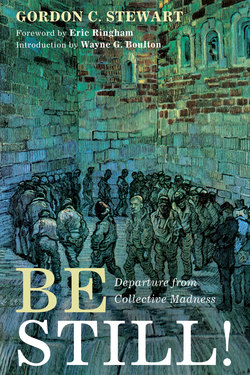Читать книгу Be Still! - Gordon C. Stewart - Страница 19
На сайте Литреса книга снята с продажи.
Reframing the Gun Debate
ОглавлениеWe hold these truths to be self-evident,that all men are created equal,that they are endowed by their Creator with certain unalienable Rights,that among these are Life, Liberty and the pursuit of Happiness.
—American Declaration of Independence
Today in America we continue to define, weigh, and measure these three “unalienable rights.”
No matter whether the Declaration’s principal author, Thomas Jefferson, and the Committee of Five of the Second Continental Congress assumed these three rights to be mutually compatible or whether they saw them in tension with each other, today in America there is little agreement about the meaning of, or the relations among, “Life, Liberty, and the pursuit of Happiness.” Instead, we are locked in a heated debate about one of the three—liberty—as it pertains to the Second Amendment to the US Constitution, adopted in 1791.
Lost in the debate is the more reflective philosophical, moral, and religious pondering of the “unalienable rights,” which in the eyes of Jefferson and the Congress were essential virtues of a new republic. Then, as now, the way we understand life, liberty, and the pursuit of happiness is shaped, to some extent, by different cultural experiences.
A new cultural landscape
At the time of the Declaration of Independence, the differences were often between northern and southern colonies. Today, the differences are still sectional, but perhaps even more, they are between rural and small town, urban and suburban cultures and settings.
Rural and small-town populations, especially those that plow the fields and grow their food (and some of ours), tend to view guns as instruments that support life and the pursuit of happiness. A gun is used for hunting, protecting the animals from coyotes, or skeet shooting. The rifle by the back door is part of rural life, not meant to be used on another human being except in the unlikely event of a burglary. The right to own and use a gun is a matter not only of liberty but also of life and the ability to pursue happiness. The gun is a family friend.
Urban populations, especially those living in densely populated centers with the high crime rates that accompany economic deprivation, see guns differently. Guns in these neighborhoods are not for hunting, protecting animals, or shooting coyotes. They are threats to life and the pursuit of happiness. The cities are divided between very wealthy, middle-class, and the economically impoverished neighborhoods where gunshots are heard while putting children to bed. Residents who can afford to leave for the suburbs to pursue happiness sometimes do.
Suburban populations are a blend of former rural and urban dwellers with native suburbanites. Some grew up on the farm or in small towns where there was little or no tension among the three unalienable rights. Some left the city in pursuit of happiness or in search of a safe place to live. Some, born and raised in the suburbs, can imagine neither the farm, the small town, nor the city as a preferred place to live. In the suburbs, it is a matter of some confusion and debate whether liberty, as in gun rights, supports or conflicts with life and the pursuit of happiness.
The National Sheriffs’ Association, serving rural and small-town America, takes a conservative position on gun rights and gun control, while the National Association of Chiefs of Police and the International Association of Chiefs of Police, serving urban, small cities, and large suburban communities, call for improved gun-control legislation.
Looking for a productive conversation
Although informed debate about the origins and intent of the Second Amendment is good and necessary, a preoccupation with the Second Amendment all but ensures the demise of a productive national conversation. We would do better to look earlier in our history to the Declaration of Independence, which defined the goals of a soon-to-be-born American republic. To this writer’s knowledge, there has been little if any discussion of gun rights and regulation in the context of the three unalienable rights explicitly lifted up in the document we all celebrate on July 4.
Those who declared American independence from Great Britain in 1776 could not have imagined that one of the three named unalienable rights—liberty—would stand as the sole right without reference to life and the pursuit of happiness.
Few venues lend themselves to a mature discussion among rural, small town, urban, and suburban American experiences. In theory, the fifty state legislatures and the US Congress provide the forums for thoughtful discussion and the search for solutions by representatives of rural, urban, and suburban constituents. But in today’s America, where representative government itself is often viewed with distrust and even fear, the likelihood of success is far less than the founders might have hoped.
Time to explore the creative tension among rights
Where and how, then, do we, the people—rural and small town, urban and suburban—citizens of the diverse country we all love, come together to discuss our life in light of the creative tension of the rights to life, liberty, and the pursuit of happiness in 2016?
In 2016 one could hardly say we in America are happy. In the light of current gun violence tragedies and our socio-political history, we might do well to remember the wisdom of Aristotle (384–322 BCE) to help guide citizens of a constitutional republic: “Happiness depends upon ourselves.”
